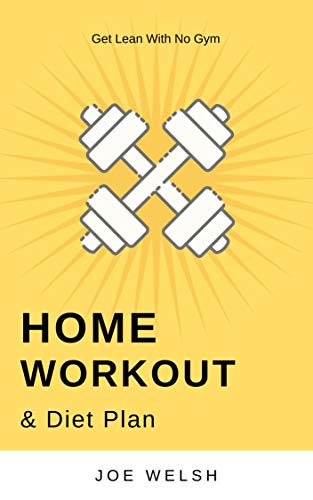
A personal trainer career is a great way to work with people of all ages and backgrounds. Personal trainers not only help people meet their fitness goals but can also help them to live a healthier, more fulfilling life. By focusing on an individual's health and fitness needs, personal trainers help clients achieve their goals and feel better about themselves.
Work environment
A personal trainer's work environment is diverse, ranging from public facilities like fitness centers, to private workout studios. Some personal trainers also work from home with their clients. Others may work in a health club, country club, or yoga studio. They might also train clients in their homes, hospitals, or both. Depending on the environment, personal trainers may need specialized skills.
Many successful personal trainers blend their love for fitness with their love for helping others. They are creative, people-oriented and disciplined. Personal trainer careers are not easy, but can be rewarding and stable.
Duties of the job
A personal trainer can be described as a professional who designs specialized exercises for clients. A personal trainer helps clients to set goals, stick with them, and provides instruction and motivation. They can also provide advice about nutrition, weight training, or cardiovascular exercise. Personal trainers typically have 3-5 years of relevant experience and must be certified.

Personal trainers typically start as employees of gyms, but once they've established a client base, they may choose to pursue a freelance career. Public liability insurance is essential for freelancers. In addition, employers may look for someone who loves fitness and has a passion for helping people achieve their goals.
Training requirements
Personal trainers should have a wide range of skills and knowledge. They should be in good physical shape and have adequate stamina. Their daily work involves standing for long periods. They must be able and confident to communicate with others. Professionals must be able to communicate effectively with clients.
There are many courses and certifications that can be taken to become a personal training professional. A NCCA-accredited program will help you get a job at a corporate fitness center. Unaccredited courses might be cheaper, but most potential trainers will choose to train in an accredited program because they are more prepared for the industry.
Potential earnings
The earning potential of a personal trainer career depends on a variety of factors, including location, experience, and working hours. Personal trainers who are just starting out will need to know how much they can make and what their growth potential is. This will help them stay motivated. Here are some ways you can increase your earning potential as an personal trainer.
To obtain additional certifications: Personal trainers are often required to complete additional certification programs in order to keep up-to-date with the latest education and training within the fitness industry. More credentials can help them fill more niches, which can increase the potential for earning more in the industry. Some personal trainers specialize in particular areas of fitness such as weight loss or sports conditioning.

Employment growth
Job growth for personal trainers is on the rise. The U.S. Bureau of Labor Statistics predicts that there will 24,000 more personal trainers by 2020. This is more than the national average. Michigan's personal trainers number will rise by 15.6%. This growth will create 188 new jobs a year.
This occupation will see significant job growth through 2026. There is a growing demand for personal coaches due to the obesity epidemic which affects adolescents and children. Because school districts have cut their physical education programs, there will be a greater demand for personal trainers who can work with children and teens. Many school districts are closed for long hours, so personal trainers have a great opportunity find clients at mid-afternoon.
FAQ
Do I need to warm up before exercising?
Warming up before you start an activity will reduce muscle soreness. You can use several methods to warm up: walking, running, jumping rope, stretching, and cycling are just a few examples. Start slow and slowly increase your pace.
What does Nutrition do for Your Body?
Your body can function properly if you get the proper nutrition. To ensure that your body receives adequate nutrition, it is best to eat a balanced meal with lots of fruits and vegetables, lean protein, whole grain, as well as healthy fats.
What Does Exercise Do for Your Body?
Exercise can help you lose weight, increase muscle mass, improve energy levels, reduce stress and improve your sleep quality. You will experience improved moods and self-esteem as well as increased productivity and a lower risk of developing heart disease.
What are cardio exercises?
Cardiovascular exercise is any activity that requires your heart and lung to work harder than normal. You can do this by running, swimming, biking, rowing and bicycling. These activities help you burn fat and increase your metabolism. They can also help you stay fit by strengthening your heart and lungs.
How does caffeine affect my sleep?
Caffeine can affect how quickly you fall asleep, and how well you sleep. Caffeine induces drowsiness which makes it easier to fall asleep. But caffeine keeps you awake longer, making it harder to fall asleep again. You should not drink energy drinks or coffee right before bed.
Can I exercise after eating?
It depends on the exercise you do. Avoid strenuous exercises after meals. It could cause stomach cramps. Instead, focus on light aerobic activities like brisk walking or biking.
Statistics
- Physical activity confers the following maternal and fetal health benefits: a decreased risk of pre-eclampsia, gestational hypertension, gestational diabetes (for example, 30% reduction in risk) (who.int)
- Globally, 81% of adolescents aged 11-17 years were insufficiently physically active in 2016. (who.int)
- In 2018, the World Health Assembly agreed on a global target to reduce physical inactivity by 15% by 2030 and align with the Sustainable Development Goals. (who.int)
- Globally, 28% of adults aged 18 and over were not active enough in 2016 (men 23% and women 32%). (who.int)
External Links
How To
How to Burn Belly Fats Quicker
Belly Fat is often thought of as a problem when trying to lose fat. It's actually a good thing, in fact. It is the fat in your stomach that protects your organs. Let's find out how to lose belly fat quickly.
Stress and inactivity are two of the major factors that cause us to store body fat. Because stress stimulates the release of cortisol hormone, it makes us hungry all the time. Cortisol levels are increased by insulin. The insulin stores the excess calories as fat. Insufficient sleep can lead to an increase in appetite and adrenaline release. These extra calories are broken down through exercise.
There are many methods to lose belly fat. You can choose to try any of these options, depending on your budget. Here are some tips to help you get rid of belly fat quickly.
-
Try to eat less food. Instead of eating three large meals per day, try to eat smaller meals. You'll eat fewer calories this way.
-
Make sure you drink plenty of water. Water helps flush out toxins from the body and keeps you hydrated. You won't overeat if you drink water before you eat.
-
Avoid unhealthy snacks. If you're looking for quick fixes, snack foods like chips, cookies, candies, etc. might seem tempting. But avoid these fattening treats as they contain lots of empty calories and too much sugar. Instead, opt for healthy alternatives such as fruits, vegetables and whole grains.
-
Do strength training exercises at least three times per week. Strength training helps build muscle mass, which means that you can burn more calories even when you are resting. Strength training strengthens bones, muscles and ligaments. It can also improve the heart, lungs, joints, and other body systems.
-
Stretching and walking are good habits. Stretching improves flexibility and mobility which can reduce back pain. Walking for 30 minutes is a great way to burn calories.
-
Reduce alcohol intake. Your diet is empty of calories, and alcohol has no nutritional content.
-
Slowly lose weight. First, determine your current weight. Add 5%-10% of your total bodyweight to calculate your ideal size. Once you have determined your ideal weight, you can start to reduce your calorie intake by 500-1000 calories per day until you reach it.
-
Avoid processed food. These foods contain high levels of sugar, salt, and preservatives. Although they are convenient, processed foods don't have enough nutrients to sustain your health.
-
Don't skip breakfast! Breakfast improves concentration, memory, energy, and stamina. Protein (like eggs), fiber and complex carbohydrates (like oatmeal) should be included in breakfast.
-
Have regular bowel movements. Constipation and irregularity cause bloating and gas. This can be prevented by drinking plenty of water and increasing fiber intake.